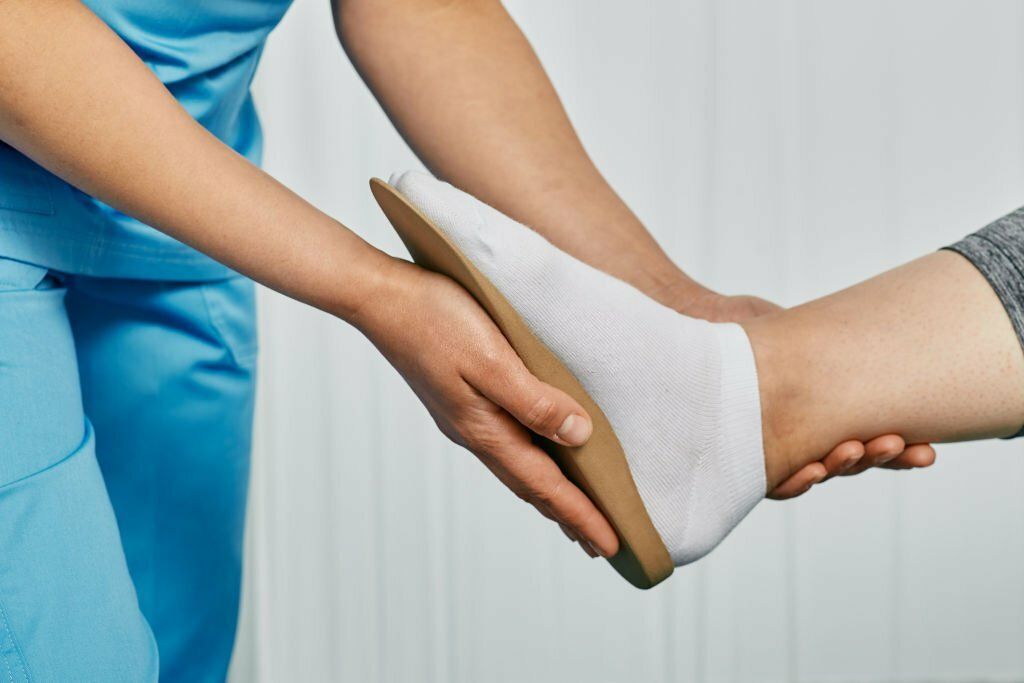Shin Splints
Shin splints, also known as medial tibial stress syndrome, is a common condition characterized by pain and inflammation along the shinbone (tibia), which is located on the front part of the lower leg. It often occurs as a result of overuse or repetitive stress on the muscles, tendons, and bone tissue in the lower leg.
The primary cause of shin splints is excessive or repetitive force being placed on the shinbone and the connective tissues that attach the muscles to the bone. This excessive force can lead to small tears in the muscles and inflammation of the surrounding tissues. Several factors can contribute to the development of shin splints, including:
- Overtraining or sudden increase in activity: Engaging in high-impact activities, such as running or jumping, without proper conditioning or allowing sufficient recovery time can strain the muscles and lead to shin splints.
- Improper footwear: Wearing shoes that lack proper support, cushioning, or do not fit correctly can contribute to shin splints by increasing stress on the lower leg.
- Biomechanical issues: Abnormal foot mechanics, such as flat feet or high arches, can alter the distribution of forces during physical activity, putting more strain on the lower leg.
- Hard surfaces: Running or exercising on hard surfaces like concrete or asphalt can increase the impact and stress on the lower leg.
It's important to differentiate shin splints from other conditions that may cause similar symptoms, such as stress fractures, compartment syndrome, or nerve entrapment. If you're experiencing persistent or severe pain, it's recommended to seek medical attention for an accurate diagnosis and appropriate treatment.
Treating shin splints typically involves a combination of rest, ice therapy, shockwave therapy, pain relief, compression, and gradual return to activity. It's essential to address the underlying causes, such as improper footwear or training errors, to prevent future occurrences of shin splints. Consulting with a foot clinic podiatrist can provide personalized guidance and treatment options based on your specific situation.
Foot problems
How to fix Foot problems
Cutting Toenails
Cutting Toenails Newcastle Podiatry
Diabetes
We treat diabetic podiatry with a range of services and assessments
Heel Pain
Newcastle Heel Pain Podiatry
Ingrown Toenails
Ingrown Toenails Newcastle Podiatry
Plantar Fasciitis
Plantar Fasciitis Newcastle Podiatry
Custom Orthoses
Custom Orthoses Newcastle Podiatry
Corns and Callus
Corns and Callus Newcastle Podiatry
Bunions
Bunions Newcastle Podiatry
Children’s Feet
Children’s Feet Newcastle Podiatry
Fungal Nails
Fungal Nails Newcastle Podiatry
Heel Pain in Children (Calcaneal Apophysitis)
Heel Pain in Children (Sever's Disease) Newcastle Podiatry
Achilles Tendonitis
Achilles Tendonitis Newcastle Podiatry
Plantar Warts
Plantar Warts Newcastle Podiatry
Sesamoids
Sesamoids Newcastle Podiatry
Foot Pain
Read MoreCorn & Callus Removal
Read More- Port Stephens Foot Clinic Lemon Tree Passage Location 1061 Lemon Tree Passage Rd, Tanilba Bay NSW 2319, Australia
- Port Stephens Foot Clinic Medowie Location 28A Ferodale Rd, Medowie NSW 2318, Australia
- 1/199 Adelaide Street Raymond Terrace 2324 Raymond Terrace, 1/199 Adelaide St, 2324, NSW, Australia
- Port Stephens Foot Clinic Lambton Location 94 Elder St, Lambton, NSW, Australia
- Port Stephens Foot Clinic Kurri Kurri 110B Lang St, Kurri Kurri, 2327, NSW, Australia
© Copyright 2025 | All Rights Reserved | Port Stephens Foot Clinic





















